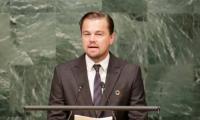We have seen a substantial flow of foreign workers remittances over the past 5 years. The number is very impressive at over US $94Bn, and the growth trend is continuing, albeit at a slower pace, which is understandable as the remittance gap between the formal and informal channel is narrowing. At the same time, the gap between remittances and exports are also narrowing down on our external account. This makes the importance of remittances more and more critical than the past. The remittances growth hitherto has largely been "God sent", the sector needs baby-sitting and pampering to ensure that this growth trend continues.
Focusing on remittances doesn't mean that we don't address the outstanding structural issues and constraints faced by our exports sector which, in fact, is more important than remittances in many ways, and the present Government has already realized this and started taking policy decisions in extending the necessary subsidies to the exporters. There's an argument, on the other hand, that our export sector has been behaving like "Trust Fund Baby" and it's about time that they "stand-up on their own two feet" but that's a debate for some other time. In this write-up, we're focusing on remittances from Non-Resident Pakistanis (NRPs).
The current worker remittances have essentially been consumption-driven which can be verified from their constant growth and inelasticity with both interest and exchange rates, which moved in both the directions during the last 4/5 years, but there has been a consistent growth in remittances. While there's substantial room for improvement to attract further "consumption-driven" remittances, which are still being routed through non-banking channels, by mobilizing foreign banks and more so foreign operations of the large local banks. Capturing these enhanced flows are largely have to do with the large local banks being not focused on this business and going an extra-mile in attracting these remittances from the non-banking channels.
Let’s dissect the causes of preference of remittances from the non-banking sector. This is identified that the cost of transaction, speed, security of funds, geographic proximity/ accessibility, convenience in terms of familiarity and language, are the primary factors which attract the remitter towards the non-banking options. The attractiveness of formal and informal channels varies greatly across these factors.
Siddiqui and Abrar (2003) find that costs of informal channels in Bangladesh are about 45 percent of formal costs. Costs in the informal sector are about 2-5 percent of the amount sent, while costs in the formal sector are on an average about 10-20 percent. Available empirical evidence also supports the second assumption—the elasticity of total remittances sent or received with respect to costs is very low. Aggregate remittances will; therefore, depend on wages in the host economy, income in the source economy, and the total number of migrants. Dual FX regime and remittance costs (vis-a-vis average size of the remittance) are the two factors which drives the gulf between the informal channels and the formal channels of workers’ remittances. Cost reduction could be usefully pursued through measures to enhance competition in the banking sector, promote financial development, and reduce exchange rate volatility. This is about time that the banks must look into the possibility of sharing/ passing on the benefits of direct and indirect subsidies/ income streams - Float Income, FX Conversion Spreads, GoP's Direct Rebate - with the end remitter and make the overall proposition of remittances through the banking channel more attractive for both the banks and the remitter. The play shall be on volumes rather than margins for the banks.
Informal, or non-banking, channels are typically faster and more convenient as they are not constrained by banking and foreign exchange regulations and often work in close proximity to their clients and frequently provide door-to-door services. An element of intimidation to deal with the bankers (formal set-up) also plays up on the minds of blue-collar worker which is a large population of Pakistan workers abroad, particularly in KSA and GCC.
This is assumed that the existing consumption-driven remittances could actually be doubled through the official channels within a period of 2/3 years, if the foreign operations of the large local banks and the relevant government departments/ ministries work in close collaboration with each other. A close alliance and working relationship is absolutely critical between different ministries/ departments of the Government of Pakistan (GoP) including Ministry of Finance (MoF), Pakistan Remittance Initiative (PRI), State Bank of Pakistan (SBP), Overseas Pakistani Foundation (OPF), Central Directorate of National Savings (CDNS), Ministry of Labor and Manpower, Foreign Ministry etc.
To enhance the "Consumption-driven" remittances, following ideas could be considered:
1. To begin with, PRI shall be given more visibility and importance. PRI shall be declared atleast a wing of the Finance Division and shall be manned with the best talent in the market.
2. Setting-up Community Centers in the large ethnic Pakistani populated cities including cities in KSA, the UK, the USA, UAE, Oman, Qatar, etc. to primarily target the blue-collar workers. Remittances from GCC adds up to almost 2/3rd of the total worker remittances of Pakistan. The research says that one of the identified reasons for the blue-collar workers to use the non-banking channel is that they feel intimidated going to the bank and dealing with "strangers" or "sophisticated individuals". These blue-collar workers find the whole ambiance of the bank overwhelming at times. On the other hand, the money changed/ hundi/ hawala facilitator comes to the door-step of NRP to collect the money and remit it back-home. There are no remittance forms/ documentation to be filled-in which is obviously a big help but poses a serious risk of fraud (some cases recently been reported).The local banks should be motivated to set-up Infrastructure - develop Pakistani Community Centers (instead of full-fledged branches) - jointly with OPF and perhaps with CDNS. These centers should consist of restaurants/ foodmarts, entertainment; e.g. ethnic films/ TV programs, musical events, theater, spiritual events etc. OPF has a specific mandate and adequate resources to set up these community centers. There maybe some community centers already existing which probably are not been managed/ leveraged to the fullest potential and could be revived for the purpose. The idea is to have a strong alliance between the banks and the OPF to manage these community centers to attract Pakistani blue-collar worker traffic, which otherwise avoid going to the bank, making the whole experience of remittances for them convenient and pleasurable through these centers. Leveraging Community Infrastructure for Cross Sell Opportunities for the local banks which can result in Building NRP Customer Base, Deposit Mobilization, Asset Building e.g. Mortgage financing against pledged remittances, etc., Building brand image (bringing a step closer to opening foreign branches), is an incentive enough for the banks, particularly the provincial banks, to pursue this joint venture proposition with OPF. According to the Bureau of Emigration and Overseas Employment, after Punjab (58%), KPK represents the 2nd biggest registered overseas work-force of 32%. Sindh and Balochistan are far behind at 9% and 1%, respectively. This data helps us figure out that if we mobilize our provincial banks - particularly Bank of Punjab and Bank of Kyber - with some specific targets than they could be most suited to attract these flows internationally.
3. Rolling-out Remitter/ Investor Education Program. The NRPs need to be educated about the benefits of the remittances through the banking/ official channels - overall costs & benefits, tax breaks in case of investments, security, official track-record etc. This education must be conducted through written literature and propagating in the media, both electronic and print. The above proposed community centers will also prove to be a great platform for such education.
4. The GoP/ SBP must encourage opening of smart branches of Pakistani banks at the Pakistani dominated/ populated areas globally with specific focus of enhancing the NRP remittance flows. If branch(es) already exist then make the Dedicated Service Desks mandatory to facilitate remittances from these international branches of local banks.
5. The GoP/ MoF should seriously consider offering Tax Breaks/ Fiscal Incentives to the banks on the income earned through the incremental remittances. This formula/ incentive plan must be devised in such a way that the risk of cannibalization in existing remittances amongst the local banks does not happened.
6. There already an existing provincial bank in Azad Jammu and Kashmir (AJK). This bank may need to be recapitalized, albeit to the requisite minimum amount, and rejuvenated into of a fully-dedicated, technology-driven bank to penetrate into the remittances from the affluent AJK ethnic community based globally but particularly in the UK. This bank will not only help in the economic uplift of AJK but also help in channelizing the remittances through the official channels which may currently been diverted through the non-banking/ informal sources due to lack of dedicated banking facilities at both ends of the remittance equation - origination and termination. While the number of AJK expats may not be too large in number but surely they are high-end in terms of amounts/ transaction value, therefore, more sophisticated remittance solution fits in well with their profile/ needs.
7. Tap into the existing NRP community groups/ associations and NRP owned restaurants/ retail centers to educate the community on the benefits of using banking/ official channels. The NRP owned restaurants/ retail centers can be used as technology-driven point of remittances in-alliance with the large local banks (primarily using phone banking, internet banking, etc.) subject to, of course, regulatory approvals.
Implementation Timeline – Each Initiative (Consumption-driven):
There is an immediate need is to come up with "Investment/ Saving Products" which will provide a medium to long term, sustainable foreign currency flows to the Country. The current Government is already working on two of such options: The one-off “Pakistan Banao Certificate” and the other is a program by National Savings called “Overseas Pakistanis Savings Certificates”. Both these products will go a very long way in terms of attracting savings inflows from NRPs.
The other “investment products” that the government could consider are:
1. GoP has already rolled-out the plan for privatization. They may consider Secondary Market Offering shares of Public Sector Entities (“PSEs”) in Oil and Gas and Financial sectors in particular. International investors have fairly large interest in these scripts/ shares. The whole idea is to make these Secondary Market Offerings dedicated for NRPs. These offerings will be done in small denominations to encourage small investor to participate and become the owner of their own PSEs. The objective is to spread the holding of PSEs all across the masses, particularly to the small investors within Pakistan and outside. Similar instruments were issued by the UK, Germany and other European countries in 80s and 90s while privatizing their PSEs. This initiative will also help in increasing the much-needed depth and breadth in Pakistan Stock Exchange.
2. Encourage Mutual Funds to arrange Road Shows internationally to attract investment in foreign currency through a SCRA account and allow them to launch foreign currency hedged funds. Especial incentives tax-related &/or otherwise, could be offered on the income earned from the sale of these mutual funds to the international investors/ NRPs.
3. The option of Retail Bond/ Sukuk structured against the future workers’ remittances is always there. However, this option poses a very high risk of cannibalization of future savings-driven inflows, and additionally this kind of bond/ Sukuk is better suited for the institutional investors, while we’re focusing/ discussing on tapping the retail investor-base.
Implementation Timeline – Each Initiative (Investment/ Savings):
Enhancement in worker remittances is the only viable option available for the government to meet its current account shortfalls in the short to medium-term. Exports are being promoted with various policy actions: however, our export sector is confronted with some structural issues, like lack of value-addition and dependence on few sectors and products (we’re virtually a three product exporting country), which will take some time to address, at least medium to long-term. In the meantime, worker remittances remain the most promising option to pursue to fund our chronic current account deficit, and shall be given the importance, accordingly.
(Author is a freelance consultant; former DG National Savings, Board Member State Bank of Pakistan and Monetary Policy Committee; and ex-regional MD Barclays Southern Africa)
Opposition leader Omar Ayub joined JIT probe, sources said on Thursday
Residents said gas supply to some areas, including Rustam Town has been suspended
Heavy firing reported between law enforcement agencies and dacoits
District Bar Association Khairpur suspended court proceedings and demanded arrest of culprits
Both Airtel and Jio deals are conditional upon Starlink obtaining govt approval to begin operations in country
Article 8 of Constitution allows exemption from fundamental rights







